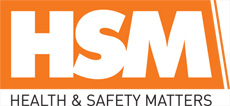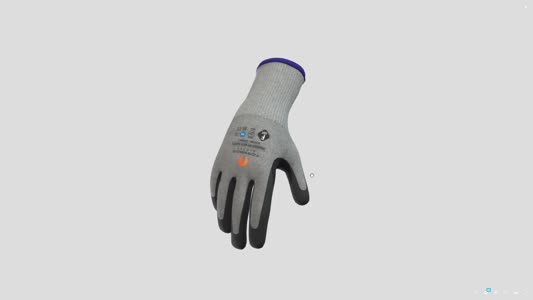
 |
Mark Sennett
Managing Editor |
 |
Kelly Rose
Editor |
| Home> | Industry Update | >Company News | >Make compliance work for your safety culture |
| Home> | Premises | >Risk Management | >Make compliance work for your safety culture |
Make compliance work for your safety culture
12 March 2025
BALANCING COMPLIANCE and culture in workplace safety can be a challenge. Scott Gaddis explores how organisations can navigate the equilibrium between compliance and culture for long-term success.

Organisations navigating workplace safety often grapple with balancing regulatory compliance and fostering a strong safety culture. Compliance establishes the necessary legal foundation for risk reduction, while culture transforms safety from a set of rules into a shared organisational value. The challenge is striking a balance between these two forces—too much reliance on compliance can create a rigid, checklist-driven approach, whereas prioritising culture without structure can lead to inconsistencies and unmanaged risks.
In my book, From Participation to Partnership – A Journey to Safety at the Front Line, I emphasise that true safety excellence emerges when compliance and culture work in harmony. A robust compliance program sets clear expectations and prevents harm, but it is an engaged, partnership-driven culture that embeds safety into daily operations, making it an organisational value rather than just a mandate.
At Intelex, our Balanced Safety approach promotes a comprehensive view of workplace safety, ensuring compliance while cultivating a culture that supports sustainable safety excellence. The Compliance Imperative: A Necessary Foundation
Regulatory compliance serves as the cornerstone of workplace safety. Agencies such as OSHA, HSE, and the EU establish frameworks that define minimum safety standards, protecting workers from known hazards. Compliance helps organisations avoid legal penalties, financial losses, and, most importantly, worker injuries and fatalities.
Key benefits of compliance include:
- Defined safety expectations that establish clear regulations and structured guidelines.
- Accountability mechanisms, such as audits and inspections, which help organisations proactively identify and mitigate risks.
- Consistency in safety performance, ensuring uniform standards across different sites and teams.
However, compliance alone does not foster a thriving safety culture. While it provides the rules, it does not necessarily instil engagement, mindset, or shared commitment. Organisations that focus solely on compliance risk creating a "check-the-box" mentality, where workers follow rules to avoid penalties rather than actively embracing safety.
The power of safety culture: Moving beyond compliance
A strong safety culture goes beyond regulatory mandates to build trust, engagement, and collaboration at all levels. Safety is not just about policies—it’s about relationships. Organisations that cultivate a robust safety culture empower employees to take ownership of safety, making it an integral part of their work.
Characteristics of a high-performing safety culture include:
- Employee ownership of safety, ensuring that workers go beyond regulatory requirements.
- Psychological safety, where employees feel comfortable reporting hazards without fear of retaliation.
- Proactive risk management, emphasising prevention over reaction.
- Leadership commitment, with executives, managers, and supervisors actively reinforcing safety values.
A strong safety culture shifts organisations from a reactive stance—where rules are only enforced post-incident—to a proactive approach where workers collaborate to prevent injuries before they happen. True safety leadership fosters a culture of partnership, where safety is not imposed on workers but developed with them. Where do you need more balance? Use our interactive tool to assess your current state, then get complimentary benchmark data and tips for finding better balance.
The pitfalls of over-reliance on either side
Organisations often struggle with an imbalance, either leaning too heavily on compliance or placing excessive emphasis on culture without sufficient structure.
Over-reliance on compliance
An overly compliance-driven approach may lead to:
- A punitive safety environment, where workers fear disciplinary action rather than feeling encouraged to improve safety.
- A focus on lagging indicators, such as injury rates, instead of proactive engagement strategies.
- Minimal workforce involvement, with top-down safety programs that do not leverage frontline insights.
While compliance is necessary, over-dependence on it can stifle innovation, leading workers to do only what is required rather than actively improving safety.
Over-reliance on culture
Organisations that prioritise culture over structure may face:
- Inconsistent safety practices, where different teams interpret safety standards differently.
- Regulatory non-compliance, exposing the company to legal and financial risks.
- Dependence on leadership influence, making safety improvements reliant on individual personalities rather than systematic processes.
Safety culture must be reinforced by policies, training, and data-driven safety systems to be effective. This is where Intelex’s Balanced Safety approach ensures that compliance and culture work in unison rather than at odds.
Achieving balanced safety
Organisations can bridge compliance and culture through intentional strategies:
- Move from participation to partnership
- Involve workers in safety decision-making.
- Encourage employee feedback on safety policies.
- Empower workers to stop unsafe work and propose solutions.
- Integrate compliance into culture
- Shift compliance from a legal requirement to a shared value.
- Align safety efforts with ethical responsibility.
- Help workers understand the why behind safety rules to boost engagement.
- Encourage leaders to model safe behaviours
- Engage directly with workers on safety matters.
- Listen to concerns and address them proactively.
- Recognise and reward exemplary safety behaviours.
- Engage workers as active partners
- Involve frontline workers in safety activities like risk assessments and investigations.
- Implement recognition programs for proactive safety actions.
- Maintain open communication channels for safety concerns.
- Leverage technology for smarter safety management
- Use digital tools like Intelex’s EHSQ software for compliance tracking.
- Foster a data-driven safety culture through real-time engagement.
- Identify risk trends for proactive intervention.
- Measure the right metrics
- Track compliance-based lagging indicators (e.g., incident rates, audit findings).
- Monitor leading indicators that reflect engagement (e.g., safety observations, training participation).
- Use a balanced set of metrics to assess safety maturity.
The future of safety: A unified approach
Organisations that move from participation to partnership create workplaces where safety is a shared responsibility. Safety cannot be dictated from the top; it must be embedded into daily operations, with leaders and workers collaborating toward a common goal.
The future of safety lies in embracing Balanced Safety, where compliance provides structure and accountability, and culture drives engagement and continuous improvement. Companies that achieve this equilibrium will not only mitigate risks but will also build a thriving, resilient safety culture—one where employees are truly engaged, empowered, and protected.
By integrating compliance and culture, organisations transform safety from an obligation into a way of life.
Where do you need more balance? Use our interactive tool to assess your current state, then get complimentary benchmark data and tips for finding better balance.
About the author
Scott Gaddis is the VP of Safety and Health and Intelex. Scott is a strategic leader with 30+ years of experience guiding organisations in EHS initiatives, regulatory compliance and risk management. He excels in regulatory compliance, risk management and EHS system improvement, driving strategies that enhance workplace safety and operational excellence. Scott holds a BS and MS in occupational safety and health from Murray State University.
























